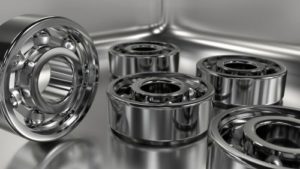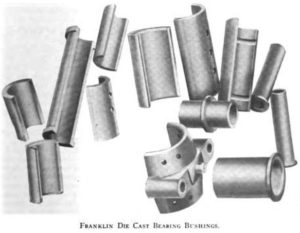

From time to time, we’ll be posting educational articles on bearings, bearing attributes, and their applications. It’s called, Bearings 101. Some will touch on basic facts; others will dive more deeply.
Most people know what a bearing is, but fewer recognize a bushing. In this piece, we’ll compare bearings and bushings and point out the differences between the two types of components.
What is a bearing?
Bearings are made up of components that allow two surfaces to roll over each other while also reducing friction. Balls or rollers act as rolling elements between races of the bearing assembly. Because of their round shape, bearings support radial (forces from above and below), axial (lateral), combined (radial and axial), and moment (tilting) forces.
What is a bushing?
A bushing or plain bearing is a cylindrical part used to reduce friction between components. Unlike a bearing, a bushing, often referred to as a sleeve, is a single piece. Though bushings and bearings are in similar categories, they’re not interchangeable and they don’t move in the same way. Bushings slide while bearings roll.
Bushings are ideal for distributing the weight of heavy or high load-bearing tolerances. They act as shock absorbers and decrease noise and wear. Many are self-lubricating, saving labor and time. Reservoirs on the surface hold grease or oil and spread it automatically with use. In the food and textile industries, factories use non-lubricating or dry bushings.
Do you need a bearing or a bushing for your machine?
A bushing is a bearing, but a bearing’s not necessarily a bushing. How do you know which component will suit your needs? What type of load are you supporting? Is it a heavy piece of mining equipment or a high-speed lathe? If you need to support a light load at a high rate of speed, bearings will probably work best. For a slow-moving, heavy load, try bushings. To choose the appropriate part, discern the load, speed, and dimensions of the application.
Part of what we do every day is talk to our customers to help them choose the right bearings for their equipment.
If you’re unsure what bushing, bearing, or specification is right for your needs, ask an expert. We happen to know a few.
Interested in learning more about bearings? Please check out our glossary of bearing-related terms.





